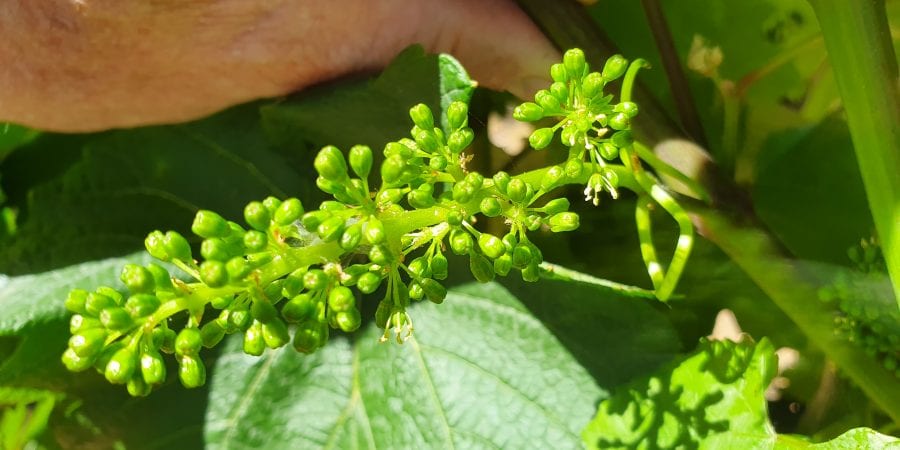(especially if you’re in South Australia!)
I was finally going to bring you an update from Kim Anderson’s vineyard at Charleston today…
But there is a tiny virus conspiring against me which meant I couldn’t leave the house to do my interview.
So, I’m going to have to shelve that one for a few weeks (fingers crossed).
And given I’m wrangling an energetic 4-year old which I usually out-source on a Thursday, I’m going to take the easy option this week.
But this topic it’s quite timely and a conversation worth having again at this stage of the growing season.
According to last week’s CropWatch report, thanks to Hamilton Viticulture, vines in the Adelaide Hills are currently at the following stages…
Most advanced
Chardonnay at Macclesfield.
E- L 25 80% caps off.
Least advanced
Sauvignon Blanc at Lenswood.
E-L 17 12 leaves separated; inflorescences well developed single flowers separated.
What does all of that mean exactly?
If we refer back to this handy chart, ( and this post if you’ve forgotten what “E-L” stages are) then we know that between E-L 19 and E-L 26 something really important happens…
FLOWERING
 The main purpose of a flower, particularly the colourful petals, is to attract pollinators (like bees). The pollinators help with the fertilisation of the flower to create a fruit or seed. And while our own personal use of many flowers stops at their visual and aromatic attractiveness (along with promoting marital bliss), there is obviously more to it than that!
The main purpose of a flower, particularly the colourful petals, is to attract pollinators (like bees). The pollinators help with the fertilisation of the flower to create a fruit or seed. And while our own personal use of many flowers stops at their visual and aromatic attractiveness (along with promoting marital bliss), there is obviously more to it than that!
Also, some flowers are more important to us when it comes to the food we eat. And the wine we drink!
As it turns out, flowers are pretty complicated. So I’m going to break it down to the absolute basics (and steal, I mean borrow and reference, lots of pictures to help us along the way)…
The parts of a flower
This first picture is actually mine!

Every single one of those little round things is a flower. In this picture though, most of them are covered by the “cap”. So you can’t see the parts of the flower.
Here is a better (even though I think mine is pretty good!) picture (thanks Jordan Winery!)…

And one with some useful words on it (care of this site)…

And an even better diagram (I found on the Lodi Wines website) of the whole set up (click on the image to see it up close)…
A “perfect” flower
Some of those words on that diagram above may look a little familiar (and are bringing back repressed memories from high school science). All you really need to know is that the flower of a grapevine is known as a “perfect” flower. That means that it has both male and female parts.
The male parts are called the stamen (made up of the anther and filament). The female parts are called the pistil (made up of the stigma, style and ovary).
Anyway, long story short… grapevine flowers can fertilise themselves! And because they are so close together they don’t need the help of bees to pollinate them. How clever!
Loving our blog? Sign up for weekly updates straight to your inbox here.
Every flower is a (potential) berry
Every one of those little flowers has the potential to turn into a berry on the bunch (full of delicious juice!).
The conditions around the time of flowering determine exactly how many of those flowers become fruit.
Some of you may remember (from this post) we had some not so great weather conditions during flowering at the end of 2018, which was just the beginning of a pretty challenging year for most.
Other than the events which are preventing us from enjoying a glass of wine at the cellar bar right now, we’ve been pretty lucky this vintage. Fingers crossed the rest of it is uneventful so we can have at least one thing to smile about this year!
Take care, everyone!



